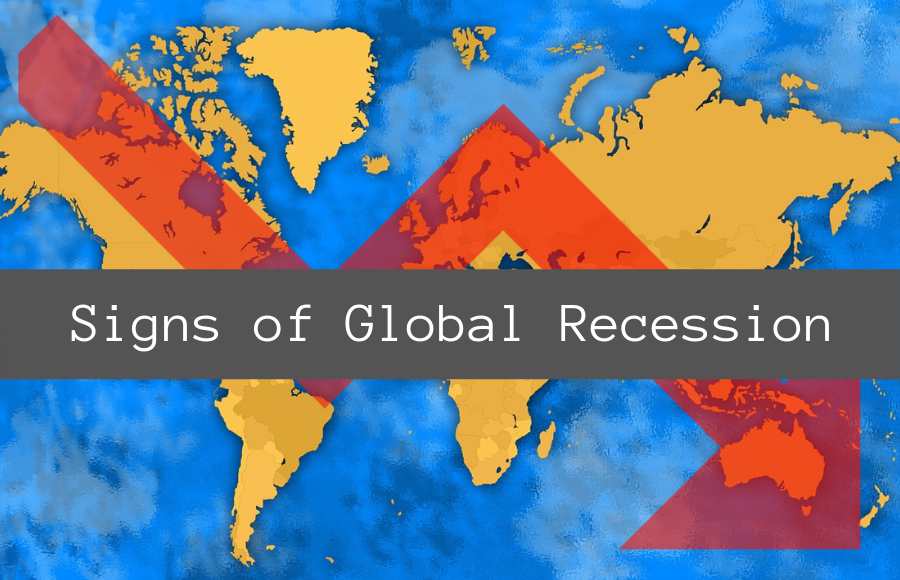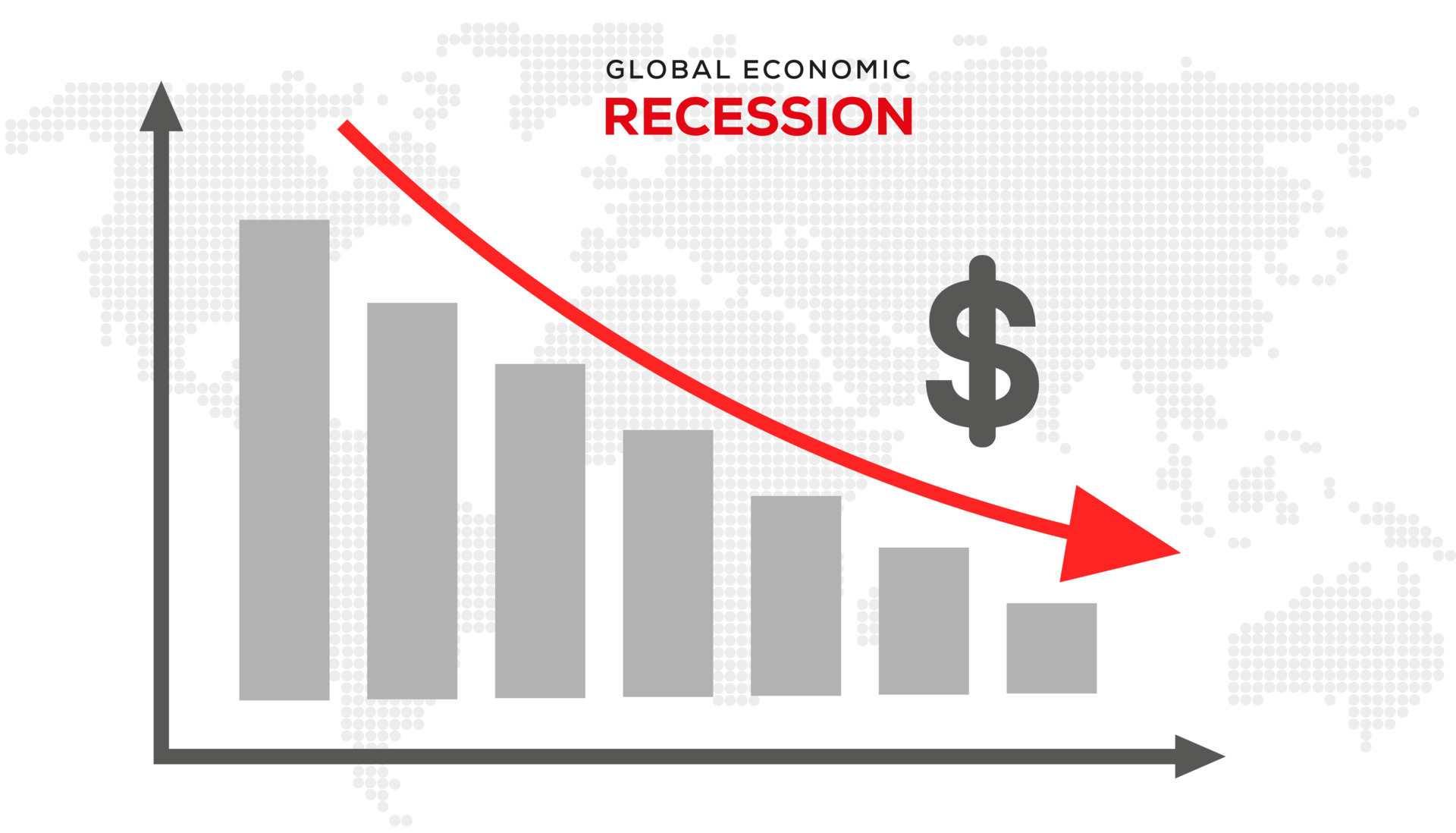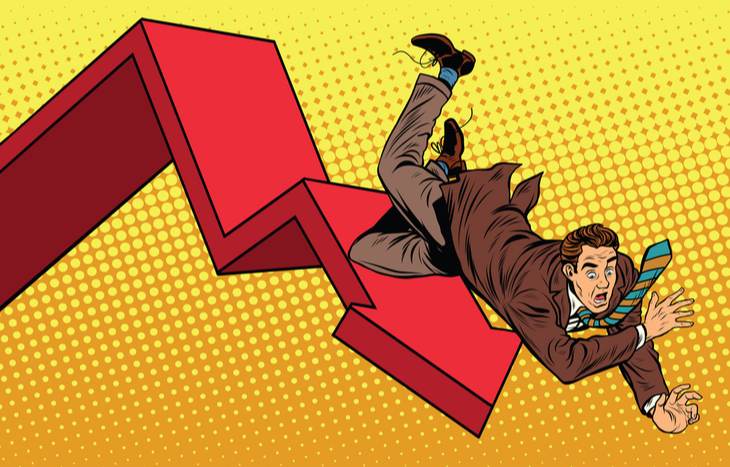Signs of a Global Recession can manifest subtly, yet they pepper our everyday financial landscape with crucial red flags that none should disregard. With a keen eye, we can spot these warnings and brace ourselves for the impact. Imagine, for a moment, your hard-earned savings, your job, and your daily spending — each a cog in the vast machine of the economy, which is now sputtering. Your ability to detect a dip in Gross Domestic Product (GDP) or upticks in unemployment rates could be your financial lifeline.
The markets unfailingly whisper the secrets of their health through stock fluctuations and bond spreads. But can you translate their language? Your shopping habits and confidence in the economy tell a story, too, one of shifting tides as consumers react to changing economic winds. And then, there’s the world stage, where the ebb and flow of investments and trade balance paint a picture much larger than any one nation. Listen closely, because learning the signs—those red flags—could be the difference between weathering a storm and being caught unprepared.
Understanding Economic Downturn Indicators
Deciphering a GDP Decline
What’s a big sign of a sick economy? A drop in Gross Domestic Product (GDP). GDP sums up all the goods and services a country makes. When this number falls, it can mean trouble. You see, less stuff produced often equals fewer jobs. And fewer jobs mean people spend less money.
Let’s dive a bit deeper. Imagine a big factory slows down making cars. This can hint at less demand, meaning people might not be buying as much. Less money in people’s pockets can be one reason. Businesses react, making less, trying not to lose money. Also, if other countries don’t buy stuff, that’s a hit to the GDP too.
Next, if GDP keeps sliding over time, we’re looking at a recession. This means not just one, but lots of areas in the economy hurt. It can be a big deal and make life tough for many. Now, why should you care? Because knowing this can help you get ready—like saving money or being careful with spending.
Why does GDP matter? It’s like a health check for the economy. It tells us how well, or not well, a country is doing. Like a fever in a person, a falling GDP can warn us early that the economy might get worse.
Assessing Unemployment Rate Trends
Another warning light is unemployment. When more people lose jobs, we know it’s not looking good. Each person out of work means one less person spending money. People buy less when they’re worried about jobs. This creates a bad loop.
Think about it. You lose your job; you stop going out to eat. The restaurant gets less business; they might need to lay off some folks. Those workers spend even less, and so on. That’s the loop, and it can hurt the whole economy.
Now, looking at unemployment over time is key. A small bump might not be bad. It could just be things changing a bit. But if it starts to rise a lot and doesn’t stop? That’s a big red flag. It can mean companies across the board are feeling the pinch. A rising unemployment rate can be a clear sign of a downturn.
So, why track unemployment? Because jobs are the fuel of the economy. They power spending and making things. When that fuel gets low, the whole engine runs rough. And job numbers can give us a real-time look at that engine, telling us to buckle up for a bumpy ride.
Remember how we talked about less spending by people? Well, if businesses see this, they might cut back too. They hire less, make less, and things slow down. It’s all connected, and jobs are a big part of it. By watching these signs — GDP and jobs — we can spot when trouble’s brewing and get ready. It’s all about being alert and smart with your choices.
Reading the Financial Market Signals
Interpreting Stock Market Fluctuations
When stocks plunge, it’s a red flag. A healthy stock market means investors are upbeat. They think companies will grow. When it crashes, investors worry. They think, “Economy might be in trouble”. It’s more than just fear. Big drops can mean less money for firms to hire and grow. When the market falls hard, it’s often one of the first signs of a downturn. Pay attention to big, quick drops. That can be a clear warning.
Now, sometimes the stock market jumps up and down in short periods. That’s normal. But a steady, big fall? That’s a sign that investors see bad times ahead. They sell their stocks to avoid losses. If enough investors do this, it can start a chain reaction. And when companies see their stock values dip, they might cut costs. This often means laying off workers. Understand this: less jobs mean less money for people to spend. Less spending can slow down the economy even more.
Evaluating High Yield Bond Spread and Volatility
Let’s talk about high yield bonds. These are loans to companies who may have trouble paying back. The gap between what these and safe government bonds pay is the “spread”. A wide spread signals that investors are worried. They want more reward to take the risk. When times are good, the spread is narrow. They feel safer, so they don’t ask for much extra. When it widens, it’s often a sign that investors are scared. They think the risk of businesses failing is rising.
How big this spread gets is key. It tells us much about how investors are feeling about the economy. Keep a close eye on it. If the spread goes up fast, it can mean rough waters ahead for the economy. Investors see more risk of defaults. That means more business bankruptcies could be coming. That’s bad news for jobs and spending.
Now, “volatility” is about how much bond prices jump around. If they move a lot, that’s high volatility. It means investors can’t decide what’s going to happen. And that makes markets nervous. Think about being on a boat in rough seas. Volatility in bond markets is like big waves. They make it hard for businesses to plan. They might hold back on spending. This can slow down the economy too.
Big moves in stock prices and bond spreads can shake our whole financial world. They make it tough for everyone. People worry about their money. Companies worry about their future. When we see these things, we should all take note. It could mean a recession is coming. Understanding these signs helps us brace for impact. It gives time to act, to protect jobs and savings. Keep watching the markets. They often tell us what’s coming.
The Consumer Confidence and Spending Equation
Analyzing Consumer Spending Reduction
When people feel unsure about the future, they close their wallets. They buy less. This is a key sign of trouble ahead. It’s called consumer spending reduction. When I look at the numbers, I often see less shopping before a recession hits.
It’s like watching a dance where shoppers slowly leave the floor. The music keeps playing, but fewer folks are buying cars, TVs, and sometimes even basics like clothes. This isn’t just guessing. Leading economic indicators tell us that when spending slows, tough times may be coming.
Stores might lower prices to get people to buy more. But if they still don’t, it’s a serious warning. It shows that folks are really worried. Jobs might not feel safe. Bills could be hard to pay. So people hold on tightly to what they have.
Tracking Inflation Surge and Deflationary Pressures
Have you seen prices jump up for things like food and gas? That’s called an inflation surge. I watch this closely. Rising prices can squeeze families and can be a big red flag for a coming recession.
Sometimes, prices rise fast. Other times, they might actually fall. This is called deflation. It might sound good, but it can hurt the economy a lot. Low prices can lead to lower wages. They can make companies close. We watch for this mix of high prices and falling ones. They push and pull on each other.
Central banks try to keep things steady. They might change interest rates or use other policy responses. But these moves take time to work. If prices keep bouncing around, it can mean a recession could be close.
So, we keep our eyes on the checkout lines and how much things cost. We try to see the storm early. That way, we can get ready before it hits.
The International Perspective on Recession Warning Signals
Examining Cross-Border Investment Decrease
When money flows less across borders, it’s a clue. It means investors may fear trouble ahead. They keep their cash close. This pullback can hit many countries hard. It’s like when friends stop visiting; you know something’s up. And just like that, our global village feels the pinch. We rely on each other, so when the cash flow slows, we all notice. You see it; less new business popping up. Big projects get the pause. And it’s a cycle that spins worldwide.
Say a firm in Germany halts its plans in Mexico. That’s not just two countries feeling the chill. The ripples spread out. Others start holding back too. Factors driving this might be many. These include high debt or weak economies somewhere else. Or maybe firms just don’t see good chances to grow.
Scrutinizing Global Trade Balance Shifts
Trade balances are like a seesaw. If they wobble, take note. A shift here shows us much about world money health. It tells who’s selling much but buying little. And vice versa. When trade dips, it’s often a sign of stress. Folks buy less because they want to save. Or they can’t afford as much. It’s a warning that tough times might be near.
Picture it this way: if fewer goods cross seas, ships stay docked. Ports are quieter. Trucks on highways thin out. This slowdown touches us all. From factory workers to store clerks, everyone feels the squeeze.
Large trade imbalances can pressure currencies too. Some may fall in value. This stirs more trouble, like costlier imports or rocked loan markets. And don’t forget, it’s a small world. So, one region’s woe can quick turn into global gloom.
Keep eyes on these signals. They help us brace for what may come. Early warning gives time. Time to plan, to adjust, to soften the blow. It’s not doom and gloom; it’s being smart and ready. That’s how we keep our economic ship steady in rough waters.
In this post, we’ve walked through key signs that hint at economic downturns. We looked at GDP trends and unemployment rates to get a sense of the economy’s health. Then, we dived into financial market clues, including stock shifts and bond spreads. We also discussed how consumer confidence and spending can signal changes. Lastly, we showed how international investments and trade shifts play their part in the big picture.
I hope this info arms you with the knowledge to spot risky economic times before they hit hard. Stay aware, keep watching these signs, and you’ll be better prepared for whatever the economy throws your way. Stay smart, stay safe, and let’s tackle these challenges head-on.
Q&A :
What are the typical signs of a global recession?
The common indicators pointing towards a global recession include a significant decline in economic activity across multiple countries, consistent stock market drops, increasing unemployment rates, decreasing consumer spending, reduction in manufacturing, and a slump in confidence among investors and consumers. It is important for content to not only provide these examples but to also elaborate on how these signs interconnect and create a ripple effect in the global economy.
How can a global recession affect everyday individuals?
During a global recession, individuals may experience job loss or reduced income as businesses struggle to maintain profitability. This can lead to decreased purchasing power, difficulty in obtaining credit, and potential loss of savings or investments. It’s critical to address the personal finance aspect, providing insights on how individuals can manage and protect their finances in the face of economic turmoil.
What can governments do to prevent or mitigate the effects of a global recession?
Government interventions can take many forms, such as implementing fiscal policies like tax cuts or increased public spending, encouraging investment, bailing out critical industries, or coordinating with other nations for global solutions. Discussions around this question should offer an analysis of past recession responses and their outcomes while exploring contemporary strategies and considerations.
How long do global recessions typically last?
The duration of global recessions varies, but they often span several quarters or even years. Historical context is essential here, highlighting examples from previous global recessions, such as the Great Depression or the 2008 financial crisis, while also discussing factors that influence the length of a recession, like the swiftness and effectiveness of policy responses and the underlying issues that prompted the downturn.
What industries are most vulnerable during a global recession?
Generally, luxury goods, non-essential services, real estate, and construction are among the industries most susceptible to the impacts of a global recession. However, it’s crucial to note that vulnerability can be industry-specific and based on various factors, including consumer demand, financial stability, and adaptability to economic shifts. Providing a nuanced exploration into why some industries falter while others may thrive is beneficial for readers seeking a deeper understanding of economic resilience.






